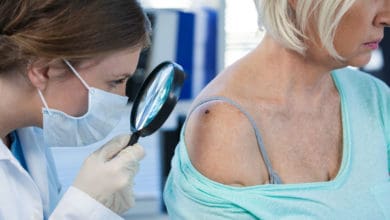If you want a career as an internist in pediatrics, here is how competitive the medical specialty is to match into an internal medicine/pediatrics residency. Internal medicine/pediatrics (often referred to as Med/Peds) is the branch of medicine that involves the care of both adults and children. While Med-Peds Primary Care training provides comprehensive primary care, it differs both structurally and philosophically from Family Medicine. A physician trained in Med-Peds can care for the newborn to the geriatric patient. Med-Peds prepares a physician well for private practice, academic medicine, hospitalist programs, and fellowships. Med-Peds is a versatile, exciting, and fulfilling career choice that we hope you will consider.
Statistics on the Internal Medicine/Pediatrics Match
As of the most recent NRMP data, internal medicine in pediatrics had a total of 445 applicants and 390 spots. This equates to 1.14 applicants per position. Of the 307 U.S. MD seniors who applied, 37 did not match.
| Total Positions | Total Number of Applicants | Number of Applicants per Position |
| 390 | 445 | 1.14 |
Osteopathic (DO) Students Matching into Internal Medicine/Pediatrics
The total number of DO Senior Applicants was 40. Of those, 35 matched, for a 87.50% match percentage. This makes internal medicine in pediatrics a Friendly field for osteopathic students.
| Total DO Applicants | Matched DO Applicants | DO Match Percentage | |
| 40 | 35 | 87.50% |
International Medical Graduates (IMGs) Matching into Internal Medicine/Pediatrics
Because there are 0.88 U.S. MD applicants per 1 program spot, internal medicine in pediatrics is considered to be Not Friendly for IMGs students.
Honors, Research and Awards for Internal Medicine/Pediatrics Residency Candidates
The average matched U.S. applicant had 9.1 volunteer experiences and 3.8 work experiences. They had 3.1 research experiences and 4.8 abstracts, presentations and publications. That makes this specialty on where the number of publications needed is Low.
| Research Experiences | Abstracts, Presentations and Publications | Work Experiences | Volunteer Experiences |
| 3.1 | 4.8 | 3.8 | 9.1 |
Average Step 2 Scores for Internal Medicine/Pediatrics
The mean USMLE Step 2 CK score was 250. The overall competitiveness level of internal medicine in pediatrics is Medium for a U.S. senior.
How long is a residency in internal medicine in pediatrics? What is the lifestyle like for an internal medicine in pediatrics resident?
Compared to other residencies, internal medicine in pediatrics has a Medium training length. As far as lifestyle, internists in pediatrics generally have a Medium stress lifestyle. Of course, lifestyle is very subjective and if you love what you do, it does not matter! And if you hate what you do, it can still be rough no matter what. In medicine, you should find the specialty that makes you enjoy your everyday interactions with patients, staff and colleagues.
What is the average salary for an internist in pediatrics?
The average salary post-graduation from a internal medicine in pediatrics residency is $251,000, provided one does not go on to sub-specialty training which can change the salary substantially. Academic versus private practice as well as location also play a large role in physician compensation.
What are fellowships one can do from an internal medicine in pediatrics residency?
Following the successful completion of general internal medicine in pediatrics residency, some physicians may choose to continue their graduate medical education with subspecialty training. Board-certified subspecialists complete additional training and qualifying examinations beyond those required for board certification in internal medicine in pediatrics. Currently, meds/peds can do any fellowship from that a pediatric resident or an internal medicine resident could. However, many choose to do a specialty that crosses all age groups such as allergy and immunology.
What are the best internal medicine in pediatrics residencies in the country?
The best residency for internal medicine in pediatrics, or any specialty, is very driven by personal preference and situation. How close you are to family, loved ones, the type of training environment, the opportunities available are all things to take into consideration above and beyond name recognition of a program. However, there are some highly regarded names in the world of internal medicine in pediatrics including:
-
- Rush University Medical Center Program
- University of Illinois College of Medicine at Chicago Program
- University of Michigan Health System Program
- University at Buffalo Program
- University of Chicago Program
- Icahn School of Medicine at Mount Sinai Program
Much of the data above is available from the AAMC Charting the Outcomes report.
FAQ: What Else Can I Learn About Internal Medicine/Pediatrics Residency?
Q: What makes internal medicine/pediatrics (Med-Peds) an appealing specialty?
A: Med-Peds is appealing because it offers the opportunity to care for patients of all ages, from newborns to the elderly. This combined specialty allows physicians to manage a broad range of acute and chronic conditions while building long-term relationships with patients. It also provides a pathway to subspecialty training in either internal medicine or pediatrics.
Q: How many Med-Peds residency positions are available each year?
A: There are approximately 400 Med-Peds residency positions offered annually in the United States. While Med-Peds is less common than categorical internal medicine or pediatrics programs, it attracts highly motivated applicants who value the diversity and flexibility of this dual training.
Q: Do I need research experience to match into Med-Peds?
A: Research experience is not mandatory but can strengthen your application, especially if it focuses on conditions affecting both pediatric and adult populations. Research in areas like chronic disease management, health disparities, or transitional care can demonstrate your commitment to the specialty.
Q: How important are away rotations for matching into Med-Peds?
A: Away rotations are helpful if you are targeting specific Med-Peds programs or want to showcase your interest in this combined specialty. They provide an opportunity to work with faculty and residents, experience the program’s culture, and secure strong letters of recommendation.
Q: What should I include in my personal statement for Med-Peds?
A: Your personal statement should emphasize your passion for both internal medicine and pediatrics, highlighting experiences that demonstrate your ability to manage patients across the age spectrum. Discuss your interest in transitional care, the versatility of Med-Peds, and how the combined training aligns with your long-term goals.
Q: What types of conditions do Med-Peds physicians treat?
A: Med-Peds physicians treat a wide variety of conditions, including diabetes, hypertension, asthma, congenital heart disease, and rare genetic disorders. They are also skilled in managing chronic diseases that transition from childhood into adulthood, such as cystic fibrosis and sickle cell disease.
Q: What procedures do Med-Peds physicians typically perform?
A: Med-Peds physicians perform a range of procedures based on their training and practice setting. Common procedures include lumbar punctures, central line placement, joint injections, and dermatologic biopsies. Some also perform neonatal resuscitations or advanced procedures in hospital or outpatient settings.
Q: Are there opportunities for Med-Peds physicians to focus on research?
A: Yes, Med-Peds physicians often engage in research on transitional care, health disparities, chronic disease management, and public health. Their broad training allows them to contribute to research across pediatric and adult medicine, improving outcomes for patients at all life stages.
Q: What subspecialties are available within Med-Peds?
A: Med-Peds physicians can pursue subspecialties in internal medicine or pediatrics, including:
– Cardiology: Treating heart conditions in both children and adults.
– Endocrinology: Managing diabetes and hormonal disorders.
– Hematology/Oncology: Focusing on blood disorders and cancer.
– Pulmonology: Treating respiratory conditions like asthma and cystic fibrosis.
– Infectious Diseases: Managing complex infections across all age groups.
– Rheumatology: Managing autoimmune and inflammatory diseases.
Q: What does the lifestyle of a Med-Peds physician typically look like?
A: The lifestyle of a Med-Peds physician varies based on their practice setting. Outpatient physicians often work regular office hours, while those in hospital-based roles may have longer or irregular schedules. The flexibility of Med-Peds allows physicians to create a work-life balance that suits their goals.
Q: What innovations are shaping the future of Med-Peds?
A: Innovations include advancements in transitional care models, precision medicine, and population health initiatives. Med-Peds physicians are also at the forefront of integrating telemedicine into primary care and managing complex conditions with multidisciplinary teams.
Q: How does Med-Peds intersect with other specialties?
A: Med-Peds physicians collaborate with specialists in cardiology, endocrinology, and pulmonology, among others. They often act as a bridge between pediatric and adult care, ensuring continuity for patients with chronic conditions as they transition between age groups.
Q: Are there fellowship opportunities after completing a Med-Peds residency?
A: Yes, Med-Peds physicians can pursue any fellowship available in internal medicine or pediatrics, such as cardiology, hematology/oncology, infectious diseases, or critical care. Fellowships allow them to develop expertise in areas that impact both pediatric and adult populations.
Q: What role do Med-Peds physicians play in transitional care?
A: Med-Peds physicians are uniquely positioned to provide care for patients transitioning from pediatric to adult care. They address gaps in continuity, educate patients about managing chronic conditions, and coordinate with specialists to ensure smooth transitions.
Q: What are the career opportunities for Med-Peds physicians?
A: Med-Peds physicians can work in primary care, academic medicine, hospital medicine, or global health. They are also well-suited for leadership roles in public health or multidisciplinary care teams that address chronic diseases across all age groups.
Q: How do Med-Peds physicians address health disparities?
A: Med-Peds physicians address health disparities by focusing on underserved populations, advocating for equitable care, and implementing public health initiatives. Their dual training equips them to manage complex cases and improve access to quality care for all age groups.
Q: How do I find shadowing opportunities with a Med-Peds physician?
A: Contact Med-Peds residency programs or combined internal medicine/pediatrics practices in your area. Networking through medical school advisors, mentors, or interest groups can also help you connect with Med-Peds physicians open to shadowing opportunities.
Q: What professional organizations can I join as a Med-Peds student?
A: Students interested in Med-Peds can join organizations such as the Med-Peds Program Directors Association (MPPDA), American College of Physicians (ACP), and American Academy of Pediatrics (AAP). These organizations provide mentorship, networking, and access to educational resources.
Q: How early should I start preparing for a career in Med-Peds?
A: Begin early in medical school by excelling in both internal medicine and pediatrics rotations, joining Med-Peds interest groups, and seeking mentorship. Gaining experience in transitional care or chronic disease management can also strengthen your application for residency.
Did You Know?
- Internal Medicine/Pediatrics (Med-Peds) combines two specialties into one:
Med-Peds is a unique dual-training program that prepares physicians to care for both adults and children. Created in the 1960s, this four-year residency combines the training of internal medicine and pediatrics, giving Med-Peds physicians the versatility to manage complex conditions across all age groups.
- Med-Peds physicians are highly sought after for their broad expertise:
Med-Peds physicians are known for their ability to manage patients with chronic diseases that span from childhood into adulthood, such as cystic fibrosis, congenital heart disease, and sickle cell anemia. Their training makes them invaluable in both primary care and subspecialty fields.
- Med-Peds physicians are leaders in transitional care:
One of the hallmarks of Med-Peds is its focus on transitional care—helping pediatric patients with chronic illnesses navigate the shift to adult healthcare. This growing area of medicine addresses a critical gap, ensuring patients receive seamless and continuous care as they age.
Explore Other Specialties:
| Specialty | Average Step 2 Score (Matched) |
|---|---|
| Anesthesiology | 246 |
| Child Neurology | 246 |
| Dermatology | 256 |
| Diagnostic Radiology | 249 |
| Emergency Medicine | 247 |
| Family Medicine | 238 |
| General Surgery | 249 |
| Internal Medicine | 248 |
| Internal Medicine/Pediatrics | 250 |
| Interventional Radiology | 255 |
| Neurological Surgery | 252 |
| Neurology | 245 |
| Obstetrics and Gynecology | 248 |
| Orthopaedic Surgery | 255 |
| Otolaryngology | 256 |
| Pathology | 242 |
| Pediatrics | 245 |
| Physical Medicine and Rehabilitation | 241 |
| Plastic Surgery | 256 |
| Psychiatry | 241 |
| Radiation Oncology | 250 |
| Vascular Surgery | 247 |



